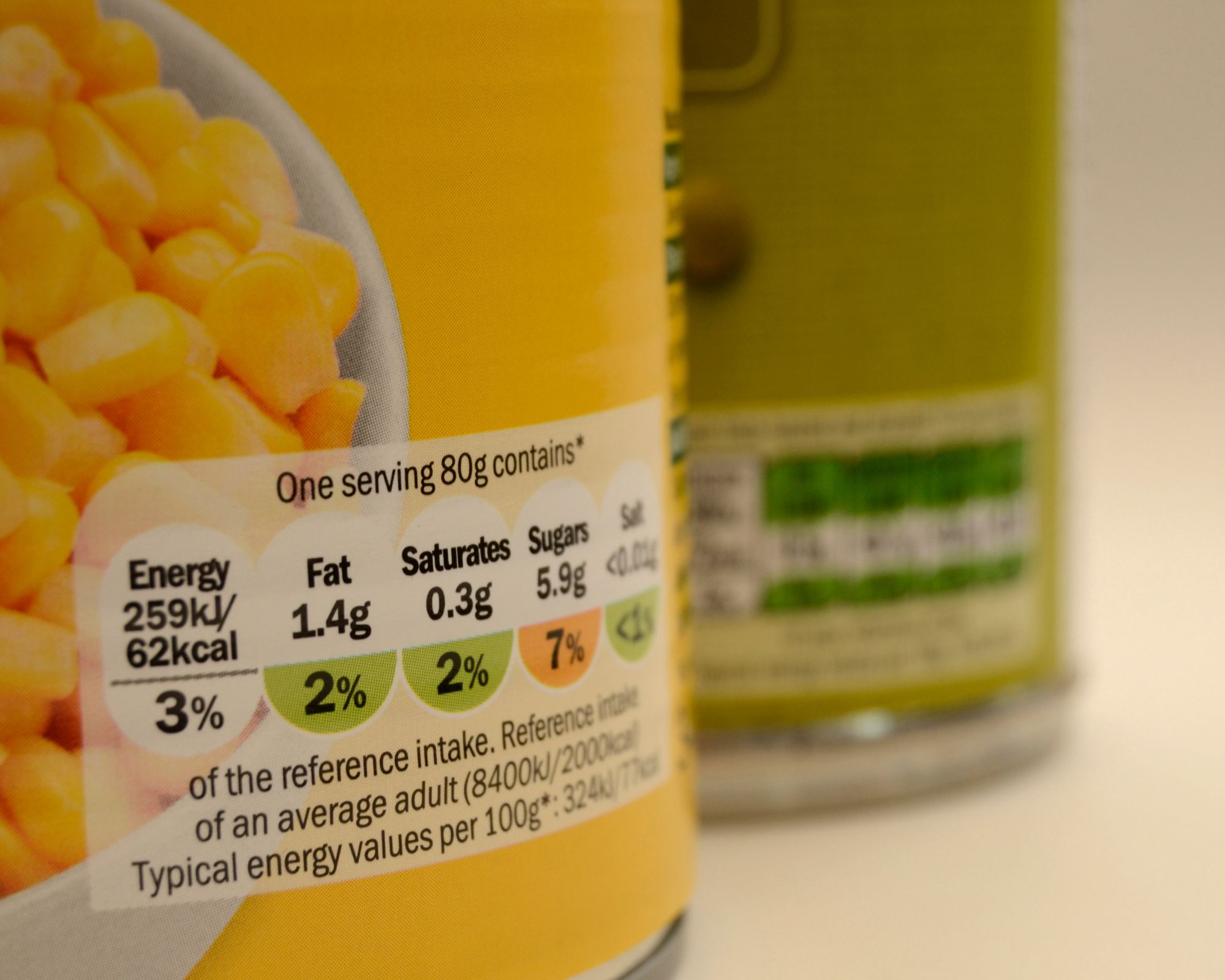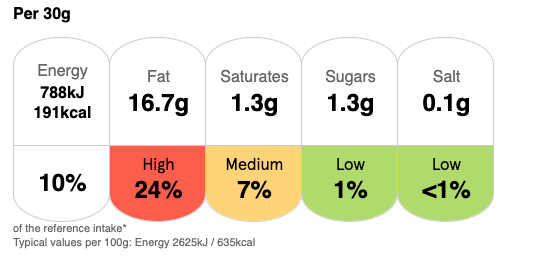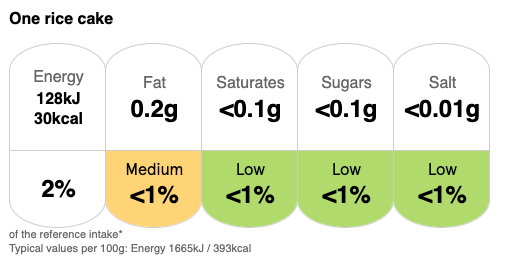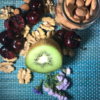 Reading Time: 5 minutes
Reading Time: 5 minutes
When it comes to your weekly shopping, are you entirely in control of your decisions around what you buy and put in your shopping trolly?
You may answer, “I’m fully in control of what I buy” why do you ask?
We mention it because, in general, most people are unaware how much their food choices are shaped by powerful marketing forces and perceived helpful nutritional labels.
It even happens to us, a healthy chef and nutritionist trained in health and food, working in this area daily. For example, Sarah visited one of the more upmarket supermarkets this morning. She found herself picking up perceived ‘healthy bread’ created by a dietician and marketed as healthy food, only to find suspect ingredients. (Find out more below.)
Today, food brands are incredibly savvy; they know how to combine powerful psychological, nutritional health language, labelling tactics, and intelligent packaging to catch our eye. And this happens more in the health food section than in any other.
The Problem With Food Labels
The Narrow Lens of Food Labels
Real food has a host of nutrients, vitamins, minerals, phytochemicals and more. Yet our food labelling today doesn’t reflect our food’s complexity and intricate nature. It narrows every food item down into what is known as macro nutrients: Carbohydrates, Fats, Sugars, Calories, and Salt.
This narrow lens trains us to believe that food only represents these macronutrients in our bodies because they are the only ones we should be caring about. Couple that with the red, amber and green traffic light system, and you’re led to believe x amount of fat or x amount of calories is good or bad. This approach, in our opinion, endangers our understanding of food to a very narrow field of nutrients only.
When you have a narrow view, it’s easy to influence your decisions. For example, if a food label has 12gr or 25% fat and is coloured in red, you’re led to assume it’s bad for your health. But what if that fat is really good for you?
Or what if you’re looking for a snack item and you come across almonds and rice cakes on the same healthy food aisle. Let’s have a look at the labels:


Which ones would you choose?
What does this information lead you to think?
Are the rice cakes healthier than the almonds?
Ingredients v’s Food Processing
Food labelling has led us to believe that ingredients matter over everything else. Herein lies the problem. We don’t know what has happened to those ingredients to make them into the final product. And this is where obscurity = manipulation.
So let’s continue with the almond example.
Ingredients on the almond package: Almonds.
Ingredients on the rice cake package: Rice, Salt.
At first glance, it all looks fab – natural foods, perhaps even organic, on both packages. Perceived healthy, easy peasy, I’ll take them both home.
But, this is where it gets interesting. It appears that rice cakes are made from all-natural ingredients. Perhaps even touted as whole grain and good for you. Despite the natural ingredients, they have been highly processed and fundamentally denatured (changed) from their original state into something quite different.
White or brown rice, to start with, is more starch than anything else, with the added benefit of fibre for brown rice. But as you go through the high heat pressure process to puff the rice, any nutrients the rice had, are lost. In addition, the starch, moisture, and fat content decrease significantly, and the total sugars increase, potentially impacting blood sugar levels and satiety.
Here’s one more example of food processing that is rife in the food industry but heavily touted as healthy. Vegetable and seed oils. Particularly rapeseed oil (aka canola oil).
Rapeseed oil is found in many food products and is marketed as healthy. The loaf of ‘healthy bread’ created by a dietician that Sarah picked up in the supermarket this morning is made with rapeseed oil (4th ingredient on the list).
The problem with rapeseed oil is, firstly, it’s often genetically modified, so not grown in its original natural form, which in our opinion, can be questionable regarding our health (but that’s for another time). Secondly, as with most seed oils, they are highly refined, bleached and deodorised to clean the oil to make it palatable and shelf-stable. This cleaning process uses harmful chemicals and permanently denatures (changes) the composition of the oil, reducing levels of vitamins & antioxidants as well as altering the Omega-3 to Omega-6 ratio.
The high heat pressure process that contributes to shelf stability can convert the oil into a transfat. Another example of where what looks like a simple natural ingredient on the label doesn’t reflect the truth.
For these reasons and others, we find food labelling to be sometimes challenging, misleading and unhelpful. Of course, there will be the odd brand and product out there that deliver what they promise; however, when we know so little about food processing and are bombarded with incredibly clever nutritional labelling tactics and psychological marketing, it can be challenging.
This is why we believe that what we often consider “normal food” is, in fact, pretty unhealthy. The solution is to eat whole foods that are minimally processed and don’t require a label! That way, you don’t need to have a food science degree to understand whether something is healthy for you or not.
When you consume a whole foods diet, it also encourages you to cook. It enables you to get in touch with your food and form a very different relationship.
When you cook from scratch with all-natural unrefined ingredients, you’re also opening yourself up to a deeper wisdom of health, nutrition and happiness that can’t be described or listed on a food label. You also open yourself up to easy weight management, greater energy levels, fewer tummy troubles, vibrant skin, happier hormones, and more stable blood sugar levels.
So What The Heck Can I Eat?
If you’re left feeling ‘what the heck can I eat then?’, you can download our Food Guide, with a complete shopping list of whole natural foods to look out for next time you are at the store.
You’re also welcome to book a free session with us to go through any food labelling questions or queries you may have.
References
Crosy, G: Ask the Expert: Concerns about canola oil. The Nutrition Source, Harvard School of Public Health. Published 2015 April 13. https://www.hsph.harvard.edu/nutritionsource/2015/04/13/ask-the-expert-concerns-about-canola-oil/
Garg M, Sharma A, Vats S, et al. Vitamins in Cereals: A Critical Review of Content, Health Effects, Processing Losses, Bioaccessibility, Fortification, and Biofortification Strategies for Their Improvement. Front Nutr. 2021;8:586815. Published 2021 Jun 16. doi:10.3389/fnut.2021.586815
Huang, Rongrong & Pan, Xiaodan & Lv, Jingang & Zhong, Wei & Yan, Fang & Duan, Feixia & Jia, Lirong. (2018). Effects of explosion puffing on the nutritional composition and digestibility of grains. International Journal of Food Properties. 21. 2193-2204. 10.1080/10942912.2018.1514634.
Key S, Ma JK, Drake PM. Genetically modified plants and human health. J R Soc Med. 2008;101(6):290-298. doi:10.1258/jrsm.2008.070372
Lin L, Allemekinders H, Dansby A, et al. Evidence of health benefits of canola oil. Nutr Rev. 2013;71(6):370-385. doi:10.1111/nure.12033
Simopoulos AP. The importance of the omega-6/omega-3 fatty acid ratio in cardiovascular disease and other chronic diseases. Exp Biol Med (Maywood). 2008;233(6):674-688. doi:10.3181/0711-MR-311
Tarrago-Trani M, Phillips K, et al. New and Existing Oils and Fats Used in Products with Reduced Trans-Fatty Acid Content. Journal of the American Dietetic Association. 2006. 0002-8223/06/10606-0011. doi: 10.1016/j.jada.2006.03.010







